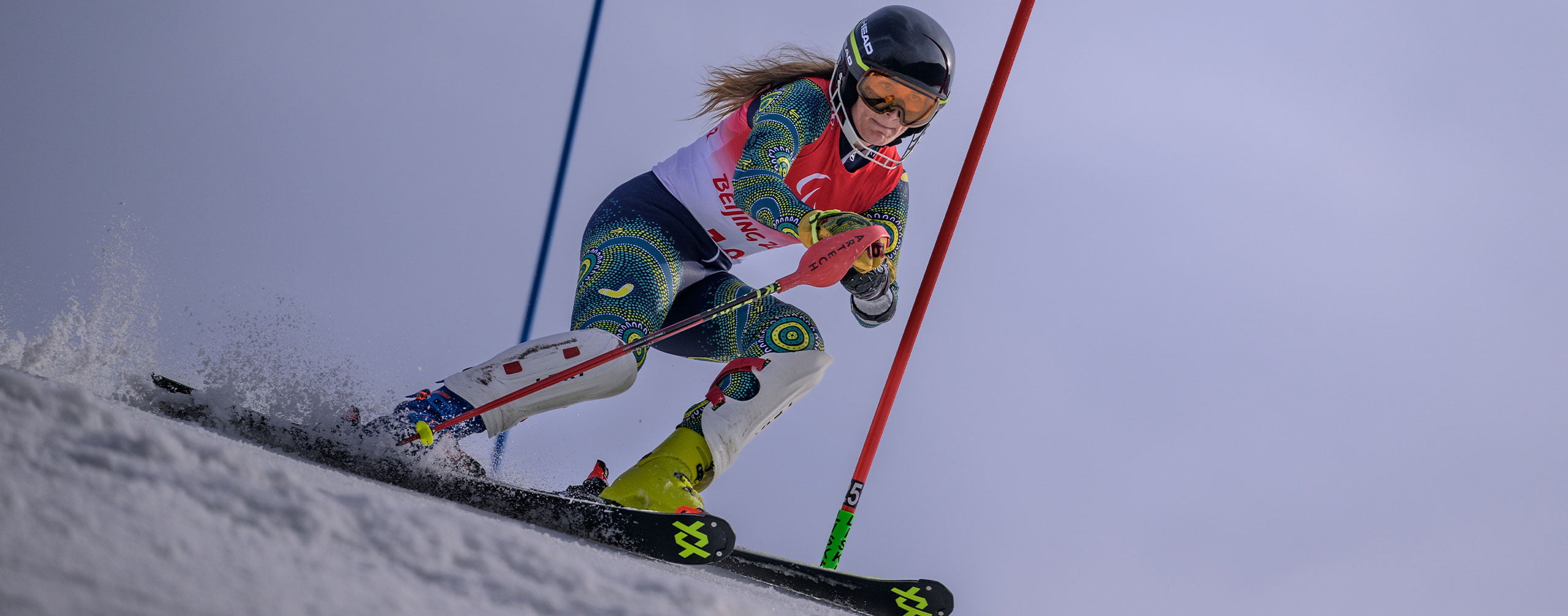Events & Disciplines
There are five traditional alpine skiing events on the Paralympic Program:
Downhill
Skiers are timed as they race down a long, steep course that may include turns and jumps. They must pass through a relatively few number of gates that are used as checkpoints. The penalty for missing a gate is disqualification. One run determines the finishing order – the shortest time wins.
Super-G
The course is shorter than downhill but longer than giant slalom and slalom. The number of gates is determined by the vertical drop, with a minimum of 35 direction changes for men and 30 for women. Gates are set at least 25m apart and the penalty for missing a gate is disqualification. One run determines the finishing order.
Slalom
The course is shorter than other alpine skiing events with a high number of gates (55-75 gates on a men’s course and 40-60 on a women’s course) that the athletes must negotiate. The penalty for missing a gate is disqualification. Each athlete completes two runs on the same day on different courses. Times from the two courses are added to determine order of finish. (The ranking in the first run is the basis for the starting order in the second run, with the fastest skiing last).
Giant slalom
The course is longer, there are fewer turns, and the turns are wider and smoother than the slalom. The number of gates is determined by the vertical drop and the penalty for missing a gate is disqualification. Each athlete completes two runs on the same day on different courses. Times from the two courses are added to determine order of finish. (The ranking in the first run is the basis for the starting order in the second run, with the fastest skiing last).
Super combined
This event combines two disciplines, either one downhill and one slalom run, or a super-G and a slalom run. At the Vancouver Paralympic Games for example, a downhill run in the morning was followed by a slalom run in the afternoon. The lowest total time wins.



